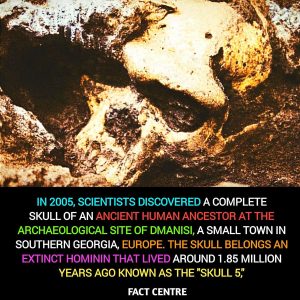The Skull That Rewrote Human History 🧠🌍✨

The Skull That Rewrote Human History 🧠🌍✨

In 2005, deep within the ancient soil of Dmanisi, a small town in southern Georgia, Europe, scientists unearthed one of the most astonishing discoveries in anthropology — a perfectly preserved skull belonging to an extinct human ancestor that lived nearly 1.85 million years ago. 💀⏳
Nicknamed “Skull 5,” this incredible find offered a rare and complete look into our evolutionary past. Unlike fragmented fossils usually found at other sites, Skull 5 contained a fully intact cranium — revealing that early humans might have looked far more diverse than previously believed. The skull combined primitive features, like a small brain and large jaw, with traits that hinted at later species — bridging a crucial gap in our understanding of human evolution. 🧬🌿
The Dmanisi discovery challenged long-held theories, suggesting that many early human species — once thought separate — may have actually belonged to a single evolving lineage. It painted a picture of humanity’s journey not as a straight line, but as a beautifully complex web of survival, adaptation, and exploration. 🌍🔥
From the hills of Georgia to the heart of science, Skull 5 reminds us that every fossil, every fragment of bone, carries a whisper from the dawn of humanity — a reminder of where we came from, and how far we’ve come. 💫❤️
#Skull5 #Dmanisi #HumanEvolution #Archaeology #AncientHistory #ScienceFacts #UnbelievableDiscoveries #HumanOrigins #TouchTheHeart #WorldMysteries











